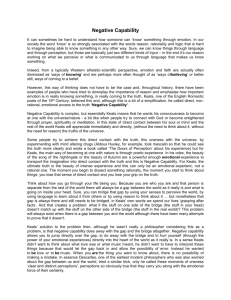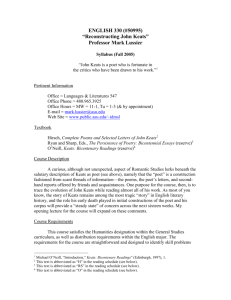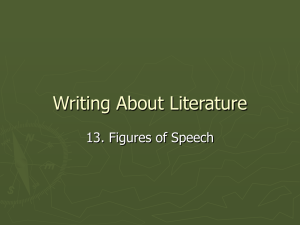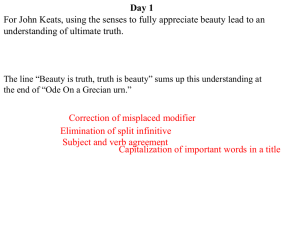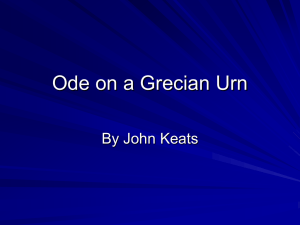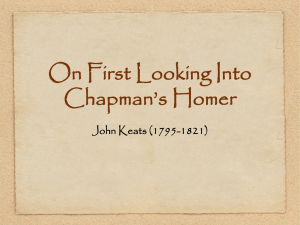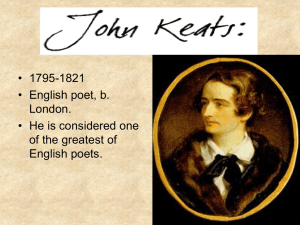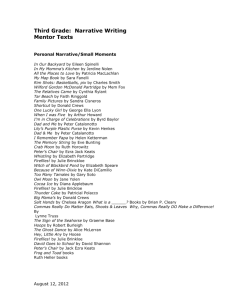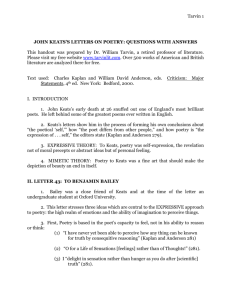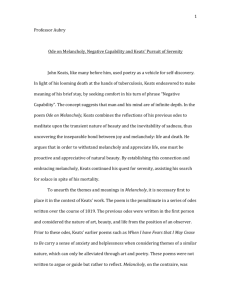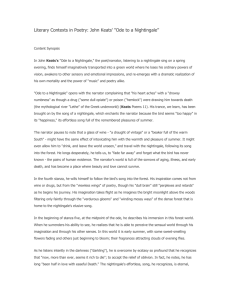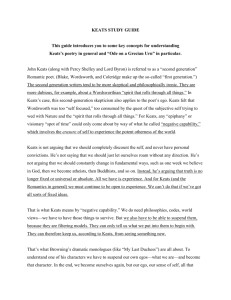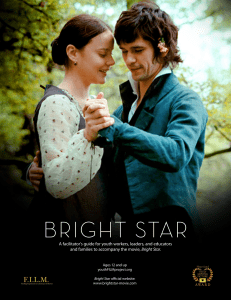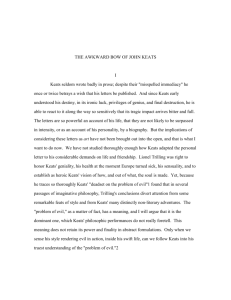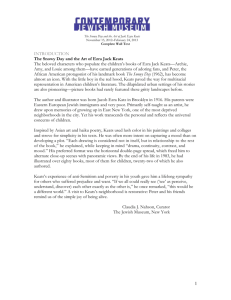*Lamia* Fragments - Keats Shelley House
advertisement
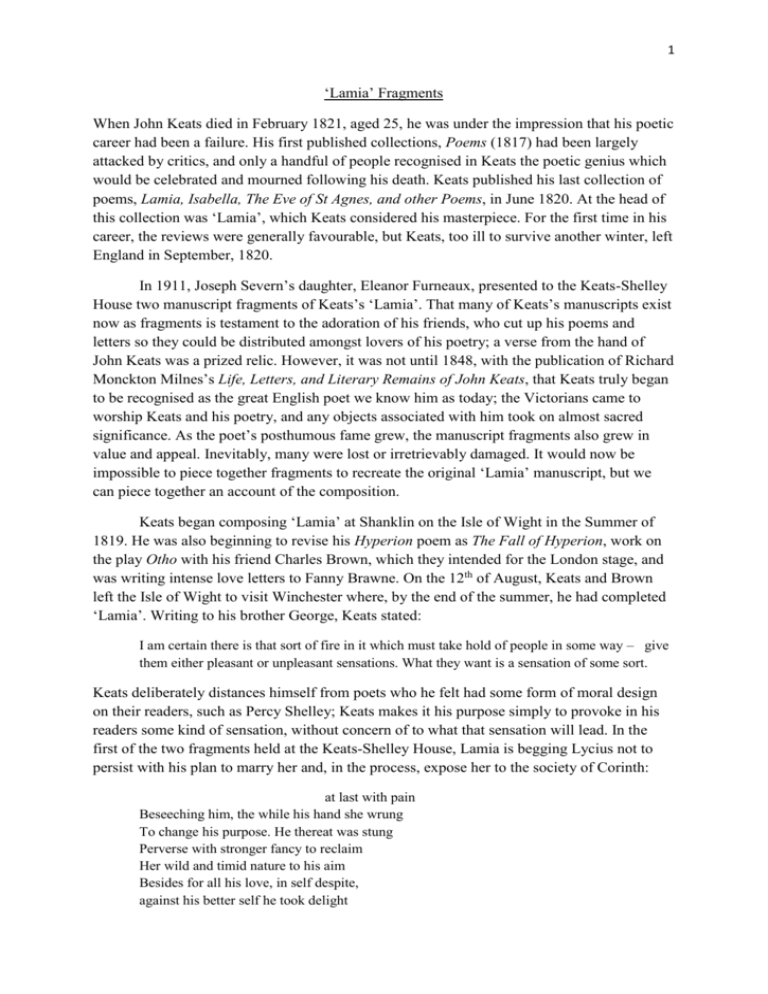
1 ‘Lamia’ Fragments When John Keats died in February 1821, aged 25, he was under the impression that his poetic career had been a failure. His first published collections, Poems (1817) had been largely attacked by critics, and only a handful of people recognised in Keats the poetic genius which would be celebrated and mourned following his death. Keats published his last collection of poems, Lamia, Isabella, The Eve of St Agnes, and other Poems, in June 1820. At the head of this collection was ‘Lamia’, which Keats considered his masterpiece. For the first time in his career, the reviews were generally favourable, but Keats, too ill to survive another winter, left England in September, 1820. In 1911, Joseph Severn’s daughter, Eleanor Furneaux, presented to the Keats-Shelley House two manuscript fragments of Keats’s ‘Lamia’. That many of Keats’s manuscripts exist now as fragments is testament to the adoration of his friends, who cut up his poems and letters so they could be distributed amongst lovers of his poetry; a verse from the hand of John Keats was a prized relic. However, it was not until 1848, with the publication of Richard Monckton Milnes’s Life, Letters, and Literary Remains of John Keats, that Keats truly began to be recognised as the great English poet we know him as today; the Victorians came to worship Keats and his poetry, and any objects associated with him took on almost sacred significance. As the poet’s posthumous fame grew, the manuscript fragments also grew in value and appeal. Inevitably, many were lost or irretrievably damaged. It would now be impossible to piece together fragments to recreate the original ‘Lamia’ manuscript, but we can piece together an account of the composition. Keats began composing ‘Lamia’ at Shanklin on the Isle of Wight in the Summer of 1819. He was also beginning to revise his Hyperion poem as The Fall of Hyperion, work on the play Otho with his friend Charles Brown, which they intended for the London stage, and was writing intense love letters to Fanny Brawne. On the 12th of August, Keats and Brown left the Isle of Wight to visit Winchester where, by the end of the summer, he had completed ‘Lamia’. Writing to his brother George, Keats stated: I am certain there is that sort of fire in it which must take hold of people in some way – give them either pleasant or unpleasant sensations. What they want is a sensation of some sort. Keats deliberately distances himself from poets who he felt had some form of moral design on their readers, such as Percy Shelley; Keats makes it his purpose simply to provoke in his readers some kind of sensation, without concern of to what that sensation will lead. In the first of the two fragments held at the Keats-Shelley House, Lamia is begging Lycius not to persist with his plan to marry her and, in the process, expose her to the society of Corinth: at last with pain Beseeching him, the while his hand she wrung To change his purpose. He thereat was stung Perverse with stronger fancy to reclaim Her wild and timid nature to his aim Besides for all his love, in self despite, against his better self he took delight 2 Luxurious in her sorrows soft and new. The owner of this fragment would have had a sense of the complicated nature of love in Keats’s poetry, which would no doubt have reminded them of the poet’s own difficult, and eventually tragic, love life. Separated from the whole, each fragment in the hands of a different owner would likely take on additional, more personal meaning, providing the holder with a unique link to their lost friend. Almost two hundred years after Keats’s death, fragments of his poetry still sell for huge sums. In 2013, a fragment of the poem ‘I Stood Tiptoe on a Little Hill’ sold at auction for £181,250 (approx. €218,200), despite being only one thirteenth of the original text. There will perhaps come a time when such fragments as those displayed at the Keats-Shelley House are no longer available to be viewed, but are instead carefully stored and hidden away from the world as they assume even greater mythic status. For now, though, we can look upon the hand of John Keats, contemplate the line between relic and artefact, and agonise over what more the young poet could have produced had he lived just a little longer. By Jonathan Quayle, PhD student in English, Newcastle University and Keats-Shelley House Research Intern, February 2014

